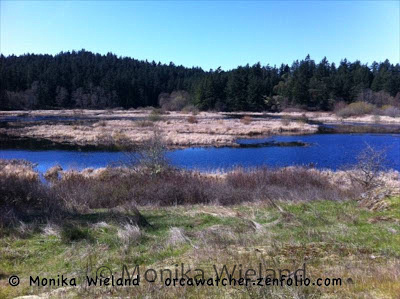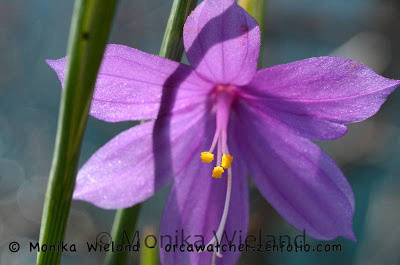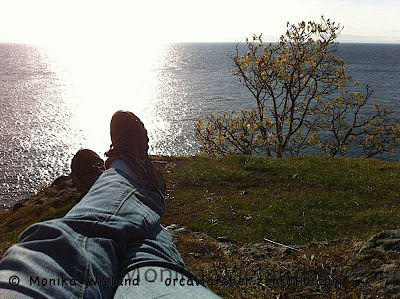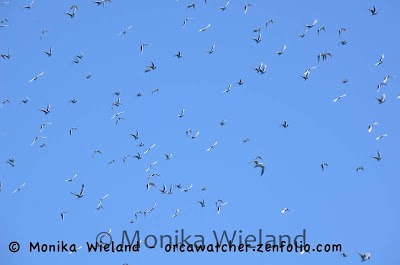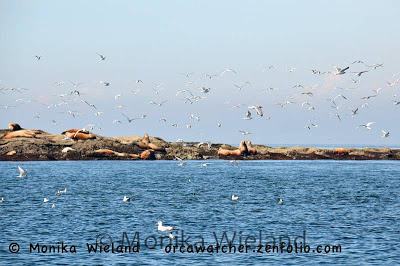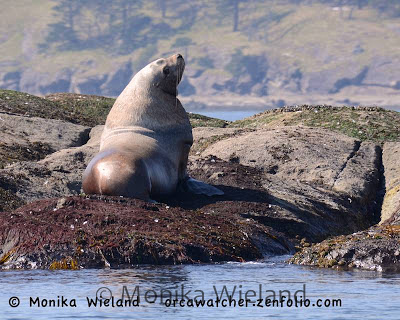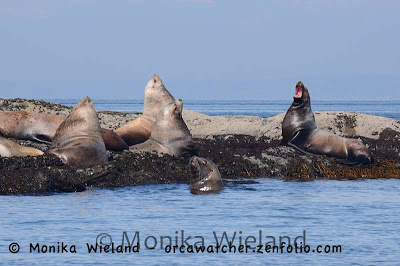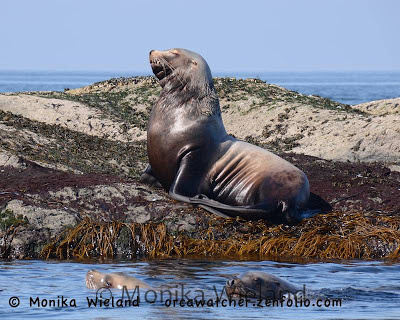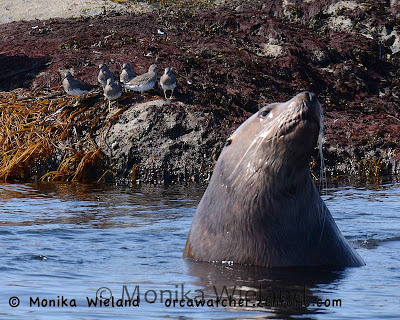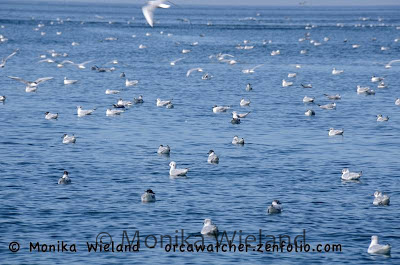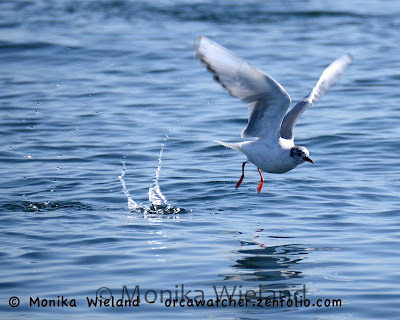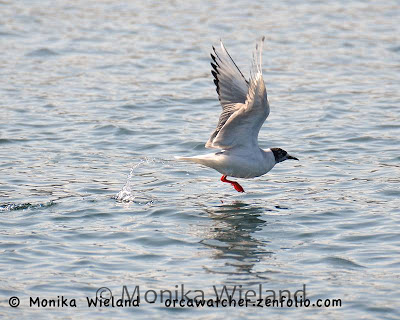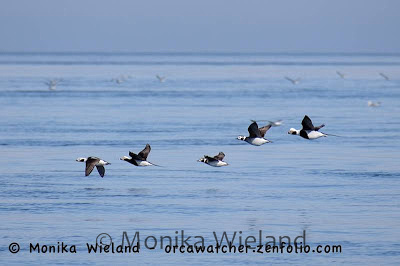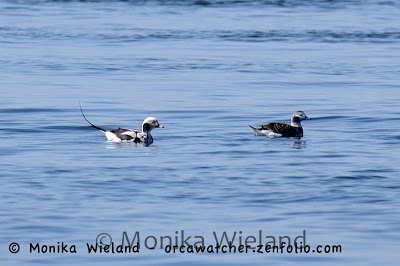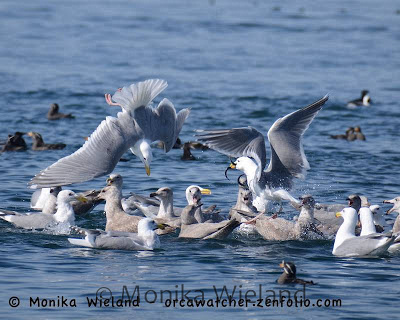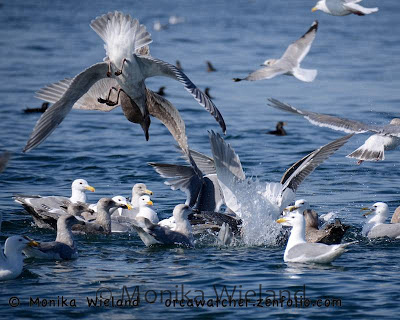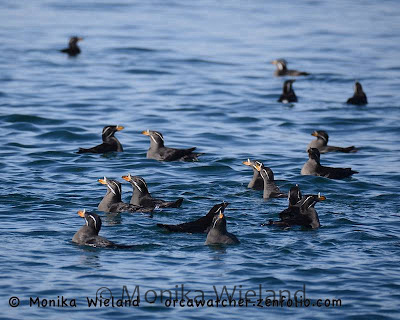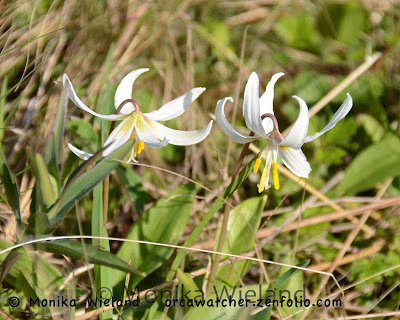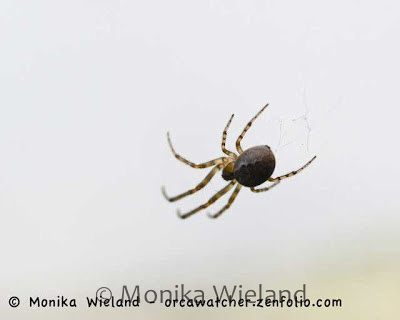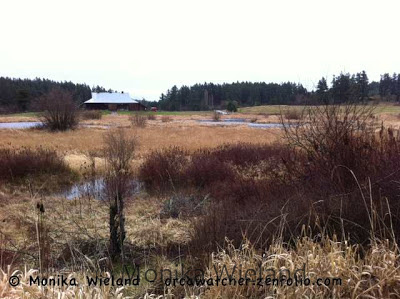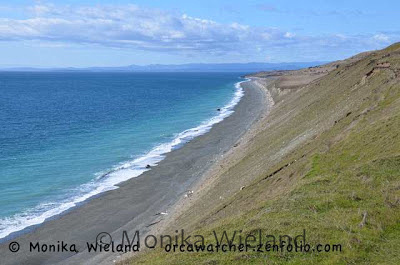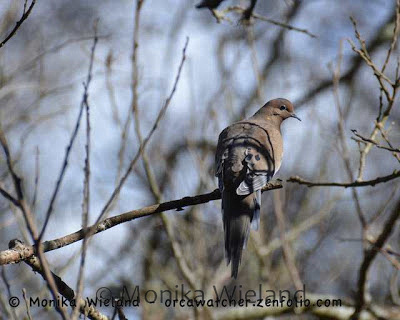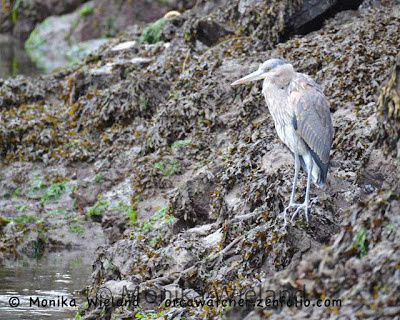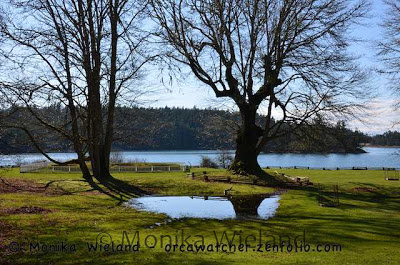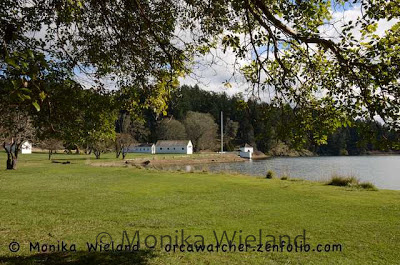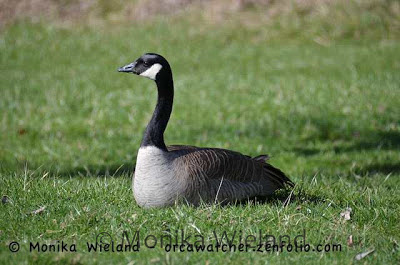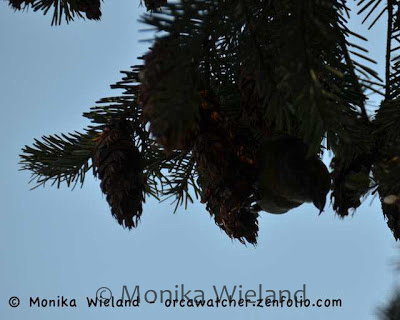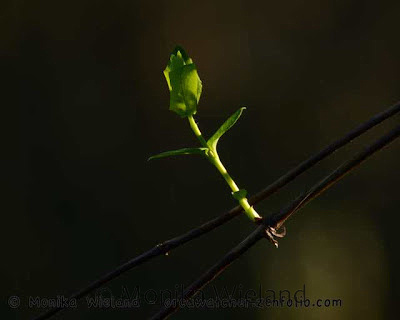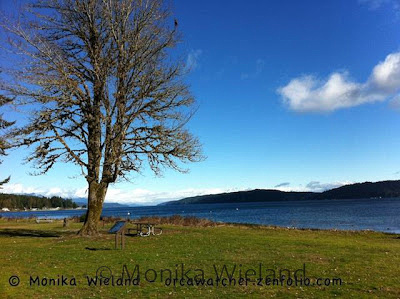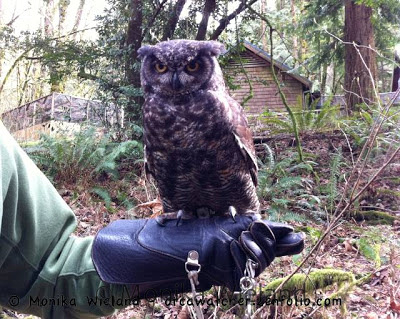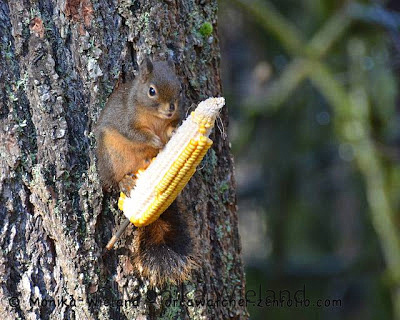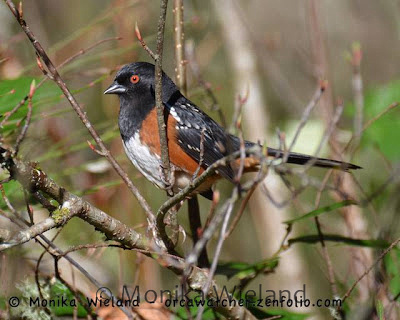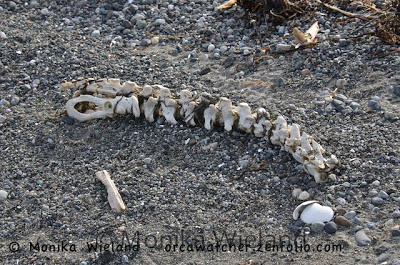Enjoying the Spring Weather
The weekend continued with the awesome weather - sunny, blue skies, and close to 60 degrees. I took full advantage by spending a lot of time outside, both going on walks and birding and just sitting in and soaking up the sun.
A walk around Three Meadows Marsh was especially pleasant, with singing marsh wrens and red-winged blackbirds around every corner. Right when reaching the marsh I also heard a Virginia rail.
I also heard a pileated woodpecker (128), saw a pair of wood ducks (129), and spotted an early barn swallow (130) in and among the violet-green and tree swallows. It wasn't just bird life, either. I also saw three Pacific tree frogs and a garter snake.
A visit to Land Bank's Westside Preserve was more about sitting in the sun and reading, but I couldn't keep myself from picking up the camera when I spotted some wildflowers in bloom. The first one I saw was satin flower, also known as grass widows (Olsynium douglasii):
And one of my favorites, shooting star (Dodecatheon sp.):
It was a little tough to be inside at work on Monday as the nice weather persisted. I left a little early and headed straight to Land Bank again to decompress from the day, which was a great decision:
Here we are on Tuesday and it's apparent the weather is changing back to being a little grayer, cooler, and wetter again. The great bird sightings are coming in left and right, however, so I'm sure there will be some more good sightings in the near future!
Spring at East Point
As the month has gone on, the long awaited spring migrants have started to arrive and as the weather has improved I've been out more and adding to the year list. On the 9th I saw some greater yellowlegs (120) at Jackson's Beach. On the 15th I added black-bellied plover (121) and purple finch (122) at Fourth of July Beach along with dunlin and sanderling. Two days later I saw my first turkey vulture (123) of the year at Mt. Young. False Bay Creek turned up a nice mixed flock of violet-green (124) and tree swallows, along with a savannah sparrow, Wilson's snipe, and several singing marsh wrens.
Yesterday at lunch I saw an album posted by my friend Traci (of Traci Walter Photography) of an amazing boat trip she took up near East Point on Saturna Island in the Canadian Gulf Islands. She saw thousands of gulls and sea birds. I sent a message to my friend Phil, another bird-watcher who like me doesn't work on a whale-watching boat and doesn't get the chance to visit some of these places all that often. He got his own boat a little over a year ago and we had talked about the potential of splitting costs to go check out some of these great sightings when they pop up. "When we going, Phil?" I asked. He responded two minutes later - "How about right now?" With the afternoon off of work that sounded perfect to me. Half an hour later we were on our way up San Juan Channel, navigating through some of the unseasonable spring fog that still remained and hoping for clear weather at East Point.
Luckily, despite even denser fog in President's Channel where we were still able to spot a few harbor porpoise, the fog did clear as we headed into the glassy calm waters of Boundary Pass. We had to get into Canadian waters before we could see the gulls, but soon they were evidence both on the water and in flight - thousands and thousands of Bonaparte's (125) and mew gulls:
Most of the birds seemed to be northeast of the point, so before we headed up there we cruised by the Boiling Reef rocks to see the harbor seals and Steller sea lions hauled out there.
It was pretty awesome to see (and hear and smell) so many sea lions:
Right before we were ready to move on I spotted a small flock of birds along the shoreline right among the sea lions. They turned out to be half a dozen surfbirds (126). Check out this shot of them just to the left of this huge sea lion!
Lucky for us, by this time the birds had moved a bit closer. I've been lucky enough one other time to see such huge congregations of birds at East Point, but at that time the thousands of Bonaparte's gulls were actively feeding and flying all over the place. Most of them were sitting on the water today, meaning every direction you looked it looked kind of like this:
It was interesting to me that the Bonaparte's and mew gulls seemed to segregate into different flocks that didn't intermix much. We'd find ourselves among one species, then the other, then the first again. Most of the Bonaparte's gulls were in transitional plumage, with some still in winter and some in full, black-hooded summer plumage. Still learning the new camera and getting the action settings right, I struggled a little bit with the in-flight shots, but got these couple of take-off shots I like:
At first it seemed like mostly just these two gull species, but if you looked closer there were other seabirds in there as well. We didn't see the thousands (!) of long-tailed ducks Traci reported, but we did see several hundred - far more than I've ever seen in one place. They seemed to be really skittish, though, and mostly we saw several dozen at a time flying in the distance. There were a few exceptions:
We came across one active bait ball that was made up mostly of glaucous-winged gulls. Unlike the long-tailed ducks, they didn't seem to mind our presence whatsoever. They had more important things to tend to. Notice the gull on the right in the first shot with some bait fish in its beak:
The bait ball was surrounded with rhinoceros auklets who we assumed were herding the fish underwater, but oddly enough we didn't see any rhinos with fish in their beaks. We ended up seeing hundreds of auklets, too, all decked out in their breeding plumage now too. Many of them were striking kind of an awkward posture with their head's raised high, maybe some kind of courting behavior?
In much smaller numbers we saw several other species, too: red-breasted mergansers, harlequin ducks, black oystercatchers, common murres, and one bald eagle.
On our way back to Friday Harbor, Phil had to make a stop at Yellow Island where he is the steward, and I was more than happy to take a quick walk around the island to check out the early spring wildflowers. Yellow Island is always several weeks ahead of San Juan Island in terms of blooms - fawn lilies were out in abundance, and I also saw some harsh paintbrush and shooting stars. Here's a pair of fawn lilies in the sunlight:
As an added bonus, I also saw my first of the year rufous hummingbird (127) while we were there!
It was a spur of the moment trip, but often those end up being the best kind. It was a beautiful afternoon on the water with some amazing wildlife. Just what I needed! Thanks Traci for the head's up, and thanks Phil for driving!
Within 10 Feet
Today I decided to try and find as many species of all types that I could within 10 feet in any direction of the houseboat. I surveyed the area about once an hour between 10:00 AM and 6:00 PM, took some photos, discovered you can use binoculars quite well to look at deeper intertidal life, and spent some time with a stack of field guides. In total, I came up with about 40 species - here's how they broke down:
Birds
Glaucous-winged gull
Belted kingfisher
Rock pigeon
Pine siskin
Dark-eyed junco
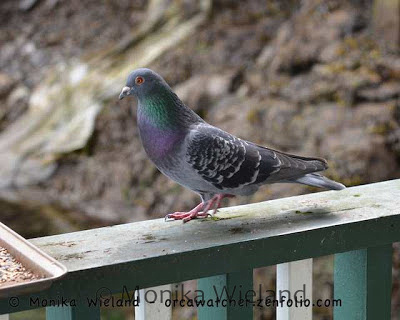 
|
| Rock pigeon |
Flowering plants
Licorice fern
Two unidentified tiny, weedy species
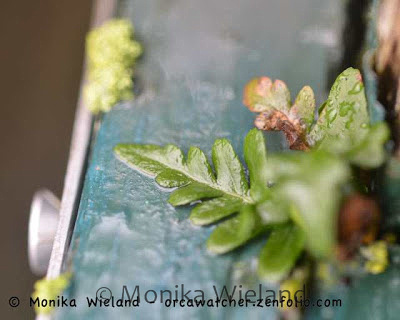 
|
| Licorice fern |
Seaweeds
Bull kelp
Rockweed
Eelgrass
Sea cabbage
Seersucker kelp
At least one other type of kelp-like seaweed
At least one type of sea lettuce (Ulva spp.)
At least one type of brown tuft seaweed
At least one type of filamentous red seaweed (of which there are about 60 local species that can only be distinguished microscopically)
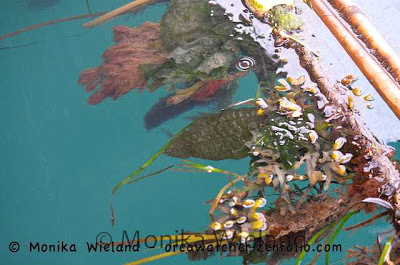 
|
| Amazingly this shot shows almost all the different types of seaweed at once |
Mosses
Five species, including probably:
Juniper moss
Red bryum
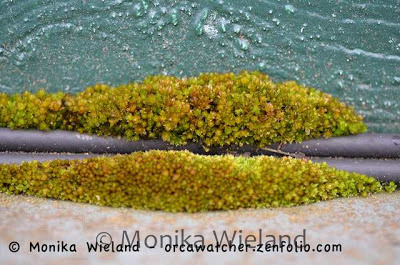 
|
| Moss species |
Lichens
At least four species, including potentially:
Xantharia sp.
Hypogymnia sp.
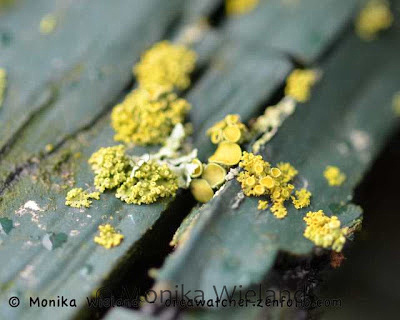 
|
| Lichen species |
Arachnids
One type of orb spider
Invertebrates
Blue mussel
Acorn barnacle
California sea cucumber
Orange sea cucumber
Giant plumose anemone
Giant green anemone
Red-trumpet calcareous tubeworm
Ochre star
Monterey sea lemon (a type of nudibranch)
Graceful decorator crab
Kelp crab - perhaps Pugettia gracilis
Giant rock scallop
One shrimp species
One unknown crab-like species (see photo)
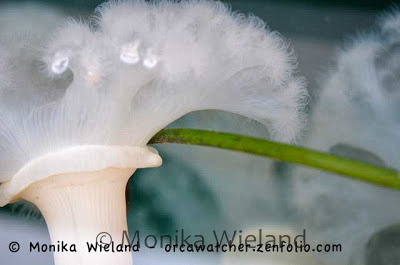 
|
| Giant plumose anemone |
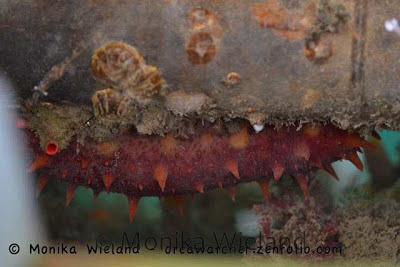 
|
| California sea cucumber |
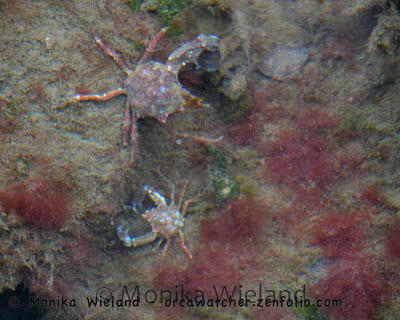 
|
| Two kelp crabs, possibly graceful kelp crabs (Pugettia gracilis) |
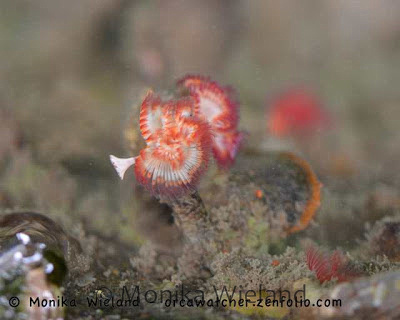 
|
| The coolest find of the day, a small species with a big name that I hadn't noticed before - red-trumpet calcareous tubeworm |
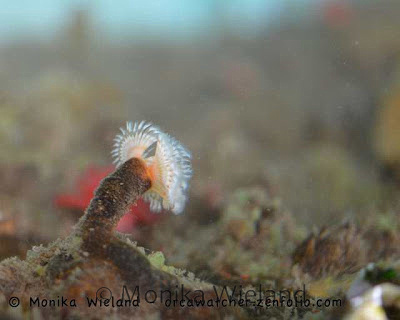 
|
| Another red-trumpet calcareous tubeworm - they ranged in color from all white to all red or any level of mixed banding between the two colors |
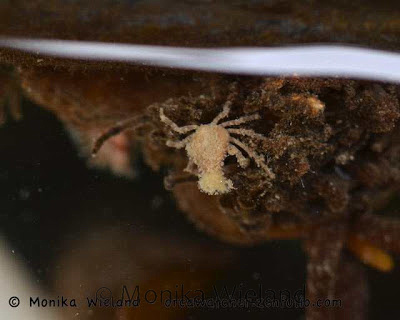 
|
| The unknown crab-like species, about the size of a thumb nail. Any ideas?? |
Mammals
Mink
Anticipating Spring
As the calendar turned to March, and the days get noticeably longer, I find I'm more than ready for some of the things I associate with spring on San Juan Island: a little more sunshine, wildflowers, and spring migrants. I was all ready to go on the first Saturday in March, but unfortunately woke up to drizzly weather that stayed all day. Not to be entirely deterred, I went out and walked around Three Meadows Marsh and did some birding in the rain.
When taking a first glance at the marsh, there weren't many (or any) bird in sight. Closer scanning with the binoculars and a walk all the way round turned up a respectable 10 species of waterfowl. The highlight of the walk, however, was hearing two or three different Virginia rails. Also heard were both marsh and Pacific wrens and a lot of red crossbills. The species total for the one hour walk was 24.
Sunday was much more what I hoped for weather-wise: sunshine! It was windy and chilly, but that didn't matter as much. I could just feel myself beginning to recover from the winter-long vitamin D deficiency as I walked along the bluffs at Cattle Point. If I just looked at the scene in front of me and ignored my partially frozen ears and fingers, I could imagine this being a tropical beach below me:
That daydream only kept me warm for a few minutes, though, so I headed to the other side of the dunes to get more out of the wind. On the windy side the only notable sighting was five bald eagles (one adult, four immature) playing in the wind. Two of the immature eagles were chasing each other around at top speed, which was awesome to watch. There were a wider variety of birds to be seen on out of the wind, however. In the trees I found a pair of mourning doves - still an uncommon species on San Juan Island, though I seem to be finding them more regularly here:
In the same clump of trees I found a small flock of bushtits (year bird 117) and hear a pair of Bewick's wrens (118) singing. A few minutes later, while scanning the channel, I got my first definitive look at a Brandt's cormorant (119) this year. I'm sure I've seen them during my other visits to Cattle Point, but they're usually too far out in the channel to see any field marks, instead ending up on my day list as "cormorant species". The species total for this outing was again 24.
During the week I didn't have a chance to get out much, but one day this very pale, scraggly looking great blue heron came for a visit right off the front porch:
It was kind of a gray week, but today, Friday, the sun came back out so this afternoon after work I went for another walk at English Camp. I was particularly hopeful to add at least one spring migrant to my year list, but alas there were no osprey building a nest, warblers singing in the treetops, or swallows cartwheeling over the bay. Patience, patience - they'll be here soon! It was a beautiful walk regardless.
There's enough different on my new camera that I still feel like I've got a lot to learn, so I played around with a few different things while aiming my lens at some of the more common species that I admittedly sometimes take for granted and don't photograph at all.
While standing at Bell Point watching five black oystercatchers in flight over the bay, I realized the Douglas fir I was standing under seemed to be crackling. Right over and around me was a small flock of red crossbills feeding on seeds out of the cones, seemingly unbothered by my near presence. Despite being so close to them, I couldn't get a very clear look at them. This is about the most of any bird that I saw - see the crossbill?
Crossbills seem to be really abundant on the island right now. They're often hard to get a good look at, but if you are familiar with their call, you can hear them everywhere. They were just one of the 26 species I saw at English Camp this afternoon.
The red-flowering currants were in bud, which means the rufous hummingbirds should be here any time now. This shot in particular reminded me that even though I'm ready for it to be here NOW, spring is indeed on the way:
Recovering From the Shock
With a long weekend last weekend we made plans with some friends to head down to Portland for a few days. We left on Friday afternoon and on the ferry to Anacortes, I saw a small group of western grebes (112), a year bird and also one of the species in San Juan County that has experienced the greatest declines in recent years, so it was a nice find for several reasons. We had decided from Anacortes to drive down Whidbey Island and take the ferry to Port Townsend where we spent the night. On the way we stopped at the Deception Pass Bridge to enjoy this sunset:
Saturday morning we continued down the Olympic Peninsula, making a couple of stops to look for birds and take in the surprising sunshine. Here at Potlatch State Park, we saw both common and Barrow's goldeneye (113) as well as wigeon, surf scoters, and common mergansers:
We got into Portland just in time to go to the hockey game we had tickets for and parked in our usual spot. Unfortunately, while we were there, my car got broken into, and a whole bunch of stuff got stolen, including my binoculars, camera gear, laptop, and new scope. We're still fighting the insurance battle, as they right now don't want to cover any of it, and in the meantime still recovering from the shock of losing so much coming to terms with the fact that people do that kind of thing to one another. Thankfully, pretty much everything that was taken was replaceable. For example, all but my last week's worth of photos were backed up at home, and nothing too personal was lost. It was a stark reminder of what's really important in life: it was, after all, just stuff.
Our weekend turned into a quite different one than we had expected, and we decided to take advantage of being in Portland to replace some of the things it would be hard to get on the island. It's taken a while to get back up and running which is why there's been such a gap in the blog postings. Obviously, I wasn't going to be happy for very long without a computer, camera, or binoculars, so we went about replacing those. We went to the Portland Audubon Society to replace the binoculars, and while there walked one of their trails where we ran into this lovely lady. I'm still looking for a wild great horned owl to add to the year list, but it was pretty cool to see her up close. She's unable to live in the wild and is kept there as an educational bird:
On the way back out to St. Helens we stopped at the Crown-Zellerbach Trail to do some more birding. It was the best part of the weekend. We saw nearly 40 species including a couple American bitterns (114) and a merlin (115).
On the plus side, if there is one at all, I got a slight upgrade to my camera and lenses. Here is the first picture I took with my new D7000. It's a similar camera body to the D90 I had but features some nice upgrades such as faster focusing and rapid-fire shooting, a weather proof body, and dual SD card ports:
Here's one of the next pictures I took while testing things out in my parents' yard:
While out and about playing with the new camera, I also saw a single band-tailed pigeon (116). It was an active morning in the yard with evening grosbeaks, chestnut-backed chickadees, dark-eyed juncos, Pacific wrens, and song sparrows out and about, too.
We headed back to San Juan Island a day later than planned and again had sunny weather for the trip back up. It was a bit dream-like to return to the small island community. While we do have crime here occasionally, it's a much more relaxed and trusting atmosphere. Here's a shot from the Anacortes ferry landing looking over towards Mt. Baker near sunset:
This weekend I got a chance to get out a little bit, and though the weather was fairly clear on Saturday, it was pretty windy, and as a result there wasn't much bird activity on the south end of the island. I did a bird survey at Fourth of July Beach, where as usual I didn't find any stranded sea birds, but I did see some remnants of the stranded pinniped I found there during my last survey:
Next up, there's nothing to do but move forward. The plan is to learn the ins and outs of the new camera and post some more test shots here soon!
© Monika Wieland Shields
